
Piecing Together the Lost Mitanni Empire
The Mitanni Empire was established in 1475 BC and was disestablished in 1260 BC. It was one of the biggest and most powerful nations of its time, and its influence spread far and wide. Yet you’ve probably never heard of it. The Mitanni Empire is a truly lost kingdom. Despite its incredible power at the time, very few records of its existence remain today. Instead, historians have had to combine sources from all over the region to piece together a picture of the nation. The Mitanni Empire is a fascinating example of historians acting as detectives.
Who were the Mitanni?
The Mitanni Empire was founded around 1475 BC in the northern Euphrates-Tigris region, which would be northern Syria and Turkey today. The ethnicity of the first settlers is still debated. Some historians believe that they were Indo-Aryans or Indo-Iranians, while others believe they were of Semitic-Hyksos (Egyptian) origin. However, the jury is still out.
Historians have been left very little to work with when it comes to determining the original ethnicity of the Mitanni people. They have mostly focused on an old treaty that was signed with the Hittites. This treaty mentions the names of several deities, and the hope was that these names could point toward an origin for the Mitanni people.
The treaty mentions gods such as Indra and Mithra, but unfortunately, both the Indo-Aryans and Indo-Iranians worshiped gods under those names. This has made it essentially impossible to narrow down the ethnicity any further with the current evidence.
The name Mitanni most likely comes from the nation's ruling class warriors called Maryannu. The Egyptians translated this as Naharin and Metani, creating Mettani, which then became Mitanni. As for the everyday people who lived there, they were Hurrian. In records, the Hittites referred to them as the Huri and the area as “the land of the Huri”.
- Drought in the Tigris River Uncovers Hidden Mittani Empire City
- Almost 100 Cuneiform Clay Tablets Unearthed and Archaeologists Cannot Wait to Decipher Them
The Mitanni Empire’s Forgotten Capital
Every empire needs a capital, and the Mitanni capital was Washukanni. Washukanni’s name is similar to the Kurdish word bashkani. This can be translated as either “source of good” or “source of wealth”, both of which make sense for naming the capital of a great empire.
Washukanni was located somewhere along the River Habur (the Al Khabour River in Syria) but its exact location is unknown. Some historians, such as Opitz and Oppenheim, theorized that Washukanni was located under the mound of Tell el Fakhariya, located near Gozan, Syria.
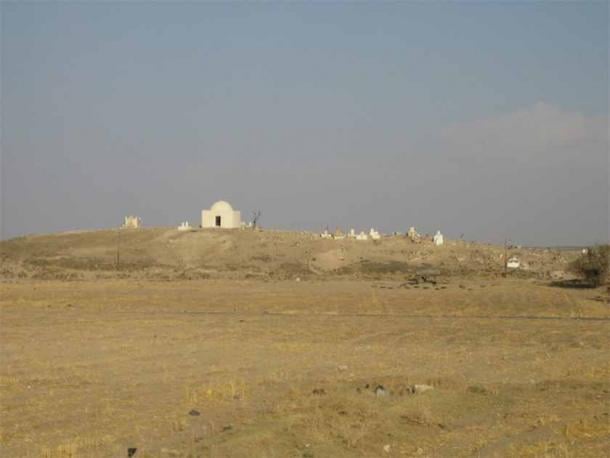
Modern Tell el Fakhariya, one of the possible sites of ancient Washukanni (Sebastian Hageneuer / CC BY SA 3.0)
Historians are still debating the location today. Recent archaeological work in the area has found evidence of something under the mound, but so far nothing ties it directly to Washukanni. This is a good example of just how little we know about the Mitanni Empire; we can’t even find its capital!
The Reach of the Mitanni Empire
The Mitanni Empire was huge. At its apex, the Mitanni Empire controlled extensive trade routes ranging down the Habur river to Mari (a Mesopotamian trade hub), and up the Euphrates to Carchemish (on the border of modern-day Syria and Turkey). Its northern border reached up to modern-day Syria, and its eastern border reached Nuzi (Kirkuk in Iraq today). The southern border stretched from Aleppo to Mari, while the western Mitanni reached to eastern Anatolia.
All this land was incredibly fertile; no artificial irrigation was needed. It is known that the people of Mitanni were adept at raising livestock, such as cattle, sheep, and goats. Yet what they were really known for were their horses. The Mitanni Empire was famed for its horsemen and charioteers.
We know that the empire enjoyed good relations with some of its neighbors. The Mitanni Empire was allied with the Kizzuwatna of southeast Anatolia, the Mukish, and the Niya. On its eastern flank, the Mitanni were allied with the Kassites (Kurdistan today).
All this means that the Mitanni Empire had a huge sphere of influence when it combined its territories with those of its allies. As mentioned earlier, this is the only way we know anything about the forgotten Mitanni Empire. Not from its own records, but from those it interacted with.
For example, we know the Mitanni were known as great horsemen and charioteers because the oldest known horse-training manual (excavated from the Hittite archives of Hattusa) contains the work of a Mitanni horse trainer.
The Hittites also recorded that the Mitanni people were great innovators when it came to designing the light war chariot. They were supposedly the first ones to use spoked wheels rather than wheels made of solid wood, making their chariots lighter and faster.
- Five of the Most Powerful and Influential Empires of the Ancient World
- Superweapon of the Ancient World: A History of Chariots - Part I
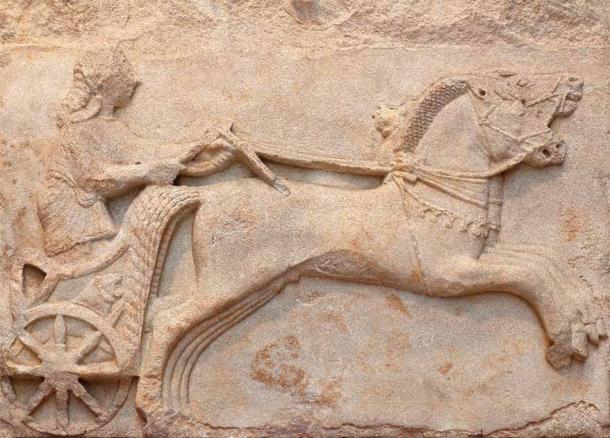
Ancient marble bas-relief of charioteer, with recently invented wheel spokes, late 6th century BC. (zzvet / Adobe Stock)
This has had huge implications historically. The Hittites stole this design and took it to ancient Egypt. The Egyptians then copied this design from the Hittites and perfected it. The war chariot was a major staple of the ancient Egyptian army and played a major role in making their army almost unbeatable. It turns out they had the Mitanni Empire to thank.
The Kings of the Mitanni
Mitanni’s leadership is somewhat less of a mystery. Although no Mitanni records exist, we know the names of the Mitanni kings through their correspondence with the leaders of other nations. We know what they did and what moves they made from records kept from these nations as well.
Starting with the 16th century BC, Mitanni’s most influential leaders seem to have been King Kirta, his son Shuttarna I, and his successor Barratarna/ Parshatatar. Of these three kings, the most well-known is Barratarna/ Parshatatar (historians can’t even agree on his name). Then, Thutmose III of Egypt declared war on the Mitanni Empire around the 30th year of his reign.
We know from Egyptian records that the Egyptians were successful. How successful is up for up for debate, however. The problem is the Egyptian records could be propaganda, making them unreliable. All we know for sure is that the Egyptians' gains were short-lived. Whatever land they gained was back in Mitanni's hands by the time of the next Mitanni king.
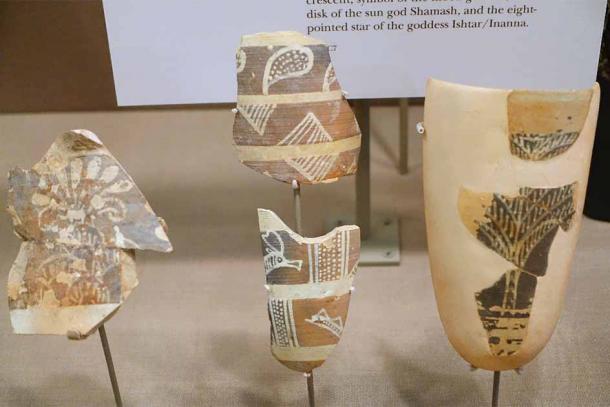
Very little remains of the Mitanni culture: some cylinder seals, pottery fragments, and buried ruins (Public Domain)
King Shaushtatar and the Rise of the Mitanni Empire
Shaushtatar led from around 1500-1450 BC. He is less of a mystery than his predecessors, and he is often depicted as the best of the Mitanni rulers. This is because during his reign the Mitanni Empire rapidly expanded and enjoyed major victories over its biggest rivals.
Shaushtatar raided the Assyrian capital, Assur, at some point in the 15th century BC. He took the gold and silver doors of the Assyrian royal palace back to Washukanni as trophies. It is also thought that it was during his reign that Aleppo, Nuzi, and Arrapha came under Mitanni rule. Historians believe that this military success was largely thanks to the Mitanni use of the war chariots mentioned earlier.
It was also under Shaushtatar that the Mitanni Empire took back much of the land that they had lost to Egypt under Barratarna. Around this time, Amenhotep II of Egypt fought in Syria, presumably against the Mitanni.
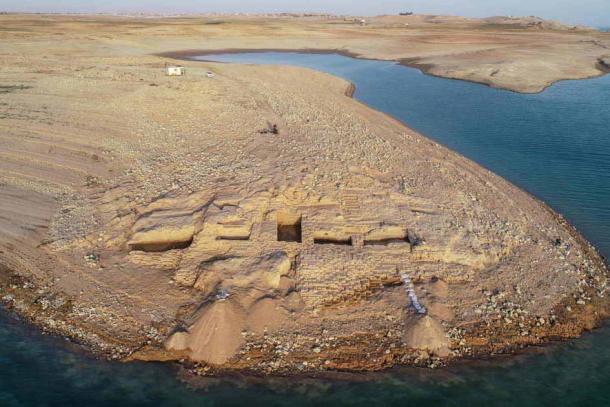
Recent excavations at a Mittani-era site exposed by drought. Aerial view of the Kemune Palace from the west. (University of Tübingen eScience Centre / Kurdistan Archaeology)
Artatma and Shuttarna: Playing Politics
While Shaushtatar did much to expand Mitanni borders, it was King Artatma and his son Shuttarna who made Mitanni a major player. It is under these kings that the Mitanni Empire joined the Great Power Club. This is a name created by modern historians to describe the strongest nations of that region during the time. The other members were Egypt, the Hittite Empire, and the Babylonian Empire.
They joined the club by making peace, not war. Artatma made peace with Egypt and Shuttarna carried it on, even visiting the Egyptian court. During this period, the two powers exchanged extravagant gifts and amiable letters.
This peace led to several royal weddings aimed at cementing the friendship. For example, Artatma’s daughter was married to Thutmose IV, and Shuttarna’s daughter was married to Amenhotep III. When Amenhotep III fell ill, Shuttarna sent him a get-well gift: a statue of the goddess Shaushka. The statue supposedly had the power to cure diseases.
This period of Mitanni rule is so well-documented thanks to the letters exchanged between the Mitanni and Egyptian rulers, called the Amarna letters. Unfortunately, even these letters are fragmented, leaving us with a picture that isn’t one hundred percent complete.
It is unclear why the Mitanni kings decided to change their previously antagonistic relationship with the Egyptians. Two common theories put forward by historians are that the Mitanni leaders desired access to Egyptian gold, or that they feared the Hittites and wanted Egyptian support.
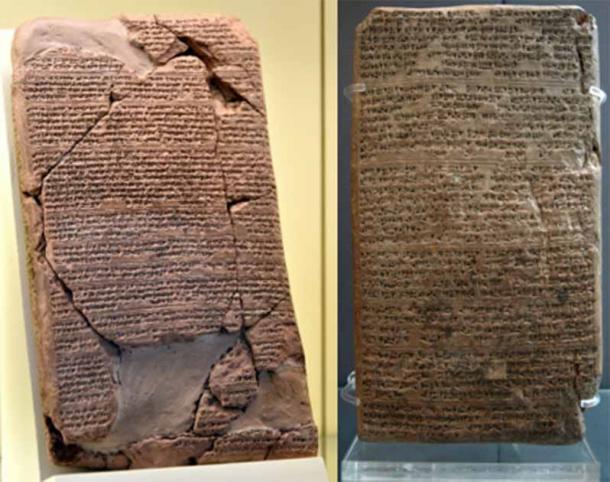
Left: One of the ‘Amarna letters’, from Tushratta king of Mitanni to the Egyptian Pharaoh Amenhotep III. Circa 1370 BC. Akkadian cuneiform text (Osama Shukir Muhammed Amin FRCP / CC BY SA 4.0) Right: The tablet that broke the alliance’s back? Cuneiform from Tushratta, king of Mitanni, to Amenhotep III of Egypt, circa 1350 BC, asking for a large quantity of gold as dowry for a Mitanian princess bride for Amenhotep III (CaptMondo / CC BY 2.5)
The Beginning of the End: Artashmura and Tushratta
What followed was the beginning of the end for the Mitanni Empire, and the bloodiest period in the forgotten empire's history. It all began with an assassination.
King Shuttarna was followed by his son, King Artashumara. Artashumara’s reign was brief; he was soon assassinated by a man called either Uthi or Ud-hi (yet again sources conflict). Uthi placed Tushratta, another son of Shuttarna, on the throne.
We have no idea why Uthi did this; his motives are unknown. Tushratta was probably very young, so Uthi's endgame may have been to use Tushratta as a figurehead while ruling from the shadows as some kind of regent.
Whatever his goal, he underestimated the young king, who swiftly managed to dispose of him. This was Tushratta’s only victory. Things would soon go downhill fast. The Mitanni and Egyptian honeymoon would quickly be over.
The Mitanni Empire had become reliant on its connection to the Egyptians, but this connection soured under Tushratta. Exactly why is unclear. Some historians have suggested that the Egyptians simply foresaw the fall of the Mitanni, and so decided to cut them loose.
Others believe Tushratta wrote to the Egyptian pharaoh demanding gold, which offended the Egyptians and caused a diplomatic crisis. Tushratta may have married one of his daughters to the Egyptians, leading to a falling out over the dowry. However the daughter's identity, Taduhepa, is a matter of much debate.
Whatever the reason, the relationship soured and the Egyptians abandoned Tushratta when he needed them the most. Tushratta was soon being attacked on two fronts. The Hittite king, Suppiluliuma was looking to make a name for himself. He decided to do this by attacking the Mitanni Empire's interests and invading the western Euphrates valley.
At the same time, Washukanni became the setting for a power struggle between Tushratta and his brother (perhaps), Artatma II. Initially, Tushratta had the backing of his nobles, and Artatma II was little more than a nuisance. It seemed like Tushratta would prevail.
Unfortunately for Tushratta, Suppiluliuma saw his chance and threw his weight behind Artatma II. Tushratta’s only chance was to turn to the Egyptians for help which never came. The Egyptians feared the growing might of the Hittites and didn’t want to pick a fight with the growing power.
Suppiluliuma wasted no time raiding Washukanni; it was a bloodbath. What happened to Tushratta is unknown. The Hittites claimed that Tushratta fled, never to return. Other sources claim he was assassinated by one of his sons in an attempt to appease the Hittites and save the city. During the resulting unrest, Artatma II took his seat on the throne.
Mitanni had survived the Hittite invasion, but it was a shadow of its former self. The Hittites took huge chunks out of the Mitanni territory. The Assyrians also took the opportunity to take their share of Mitanni land.
The Fall of the Kingdom of Mitanni
Artatma II was followed by his son, Shuttarna. It appears Shuttarna was no fool; he knew his kingdom was in trouble. One of his first acts was to appease the Assyrians. He returned to them the palace doors of Ashur that his ancestor had taken.
His hope was that the Assyrians would help protect him against the constant Hittite threat. The Assyrians and Hittites were enemies, and it seems Shuttarna wanted to play them against each other. The next time the Hittites attacked Washukanni, the Assyrians sent their army to help.
When the Assyrian army arrived, everything went wrong. For reasons lost to time, Shuttarna did not allow his Assyrian allies to enter Washukanni. The Assyrians, feeling slightly and perhaps more than a little annoyed, decided to attack the very city they had come to save. In doing so, they sealed the Mitanni Empire's fate.
What followed was a three-way war between the Mitanni Empire, the Hittites, and the Assyrians. After years of fighting, when the dust settled the Assyrians were the victors. They claimed the Mitanni lands for themselves and sent the Hittites home to lick their wounds.
The Assyrians put a vassal king in charge of the area, Shattuara. How he was related to his predecessors is known. Shattuara and his successors would continue to rebel against Assyrian control over the next few decades. Despite their best efforts, they never succeeded, and the Mitanni Empire was lost forever.
Conclusion
These rebellions against the Assyrians are probably what led to the Assyrians' largely successful attempt to wipe the Mitanni Empire from history. They destroyed every record and every trace of the Mitanni that they could. This has left historians with precious little left to work with. Today we know next to nothing about Mitanni culture and society.
The only sources we have come from kingdoms that were either continually hostile towards the Mitanni Empire, or eventually became hostile towards them. These sources also often actively contradict each other, making them unreliable. This means that everything we do know about the Mitanni often has to be taken with a grain of salt.
Sadly, we’ll probably never learn much more about the forgotten Mitanni Empire; it has likely been lost to time for good. It is fascinating and a little scary to think that a nation that was once such a powerhouse can fall to nothing, and be erased from history almost completely.
Top image: Valley of the Tower of Tombs, ruins of ancient Palmyra in Syrian desert Source: Monik-a / Adobe Stock
By Robbie Mitchell
References
Barjamovic, G. 2020. The Empires of Western Asia and the Assyrian World Empire, in: The Oxford World History of Empire: Volume Two: The History of Empires. Oxford University Press. Available at: https://books.google.com.bo/books?id=1GkLEAAAQBAJ&dq=mitanni&hl=es&lr=
De Martino, S. 2018. Political and Cultural Relations between the Kingdom of Mittani and its Subordinated Polities in Syria and Southeast Anatolia, in: Changing Faces of Kingship in Syria-Palestine 1500–500 BCE. Ugarit Verlag. Available at: https://123dok.org/document/8yd06e1z-political-cultural-relations-kingdom-subordinated-polities-southeast-anatolia.html
Mark, J. 2021. Mitanni. World History Encyclopedia. Available at: https://www.worldhistory.org/Mitanni/















